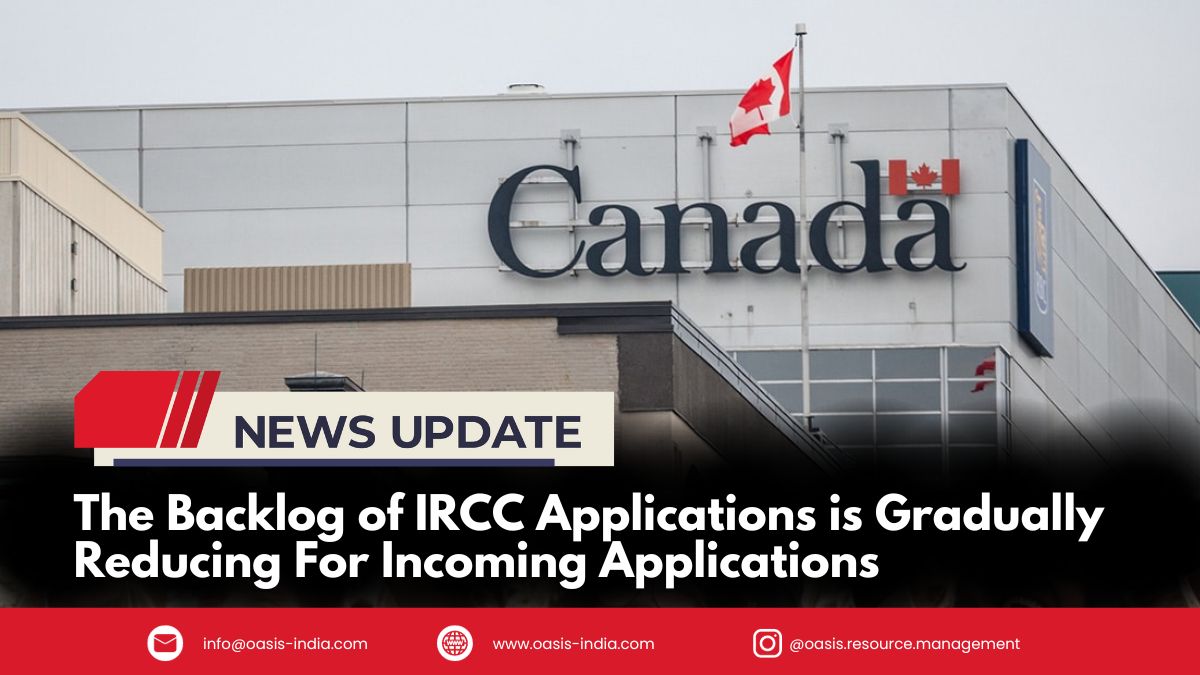
The backlog of IRCC applications is gradually reducing for incoming applications as provided by Immigration Refugees and Citizenship Canada (IRCC).
IRCC reveals that as of July 31, there is a backlog of 802,600 applications out of a total of 2,274,600. This indicates a decrease in the backlog compared to the last update on May 31, when there were 820,000 applications considered backlogged out of 2,248,000. It’s important to note that the summer months typically see a surge in applications, particularly for study permits, work permits, and temporary resident (visitor) visas.
IRCC defines applications in inventory as those that have been submitted but not yet finalized. If an application is not processed and finalized within their service standards, it is then considered part of the backlog.
Service standards refer to the average processing times that IRCC aims to achieve for various types of applications. For example, Express Entry Canada applications for permanent residence should ideally be processed within six months, while a study permit should take no more than 60 days.
IRCC’s goal is to process 80% of all applications within service standards and keep the backlog at 20% or less. In 2022, IRCC successfully finalized over 5.2 million applications across all their lines of business.
Permanent Residence
Regarding permanent residence, the latest data shows that IRCC has 631,500 permanent resident (PR) applications in inventory, with 290,500, or 46%, considered part of the backlog. This represents a decrease from May when there were 640,000 PR applications, and 48% were not processed within service standards.
IRCC categorizes its backlog projections for PR applications into three groups: Federal High Skilled Workers, Express Entry applications for candidates in the Provincial Nominee Program (PNP), and PR applications for spouses, partners, and children. Each category has its backlog statistics, with some improvements and variations since May.
Citizenship
For citizenship applications, there are 296,900 applications in inventory, with 67,900, or 23%, in backlog. This marks a 4% reduction from May when 27% of applications were considered part of the backlog. IRCC’s projection for citizenship application backlog in July was 24%, and it’s expected to increase to 26% in August and September.
Temporary residence
In the realm of temporary residence, there are 902,000 applications in inventory for temporary residence visas and permits, significantly lower than the 1.3 million in May. These applications are divided into three categories: study, work, and visitor visas. Backlog percentages vary among these categories, with some slight changes compared to May’s data
Methods to reduce the backlog
IRCC has implemented several strategies this year to alleviate the backlog of temporary residence applications, including:
1. Launching an online portal, enabling certain permanent residence applicants to apply digitally.
2. Extending work permits for individuals with expiring post-graduate work permits.
3. Prolonging the duration of stay for parents and grandparents in Canada on a Super Visa to five years, with the possibility of a two-year extension.
4. Expanding the student direct stream to include seven more countries.
5. Expanding work permit eligibility to encompass family members of temporary foreign workers.
CUAET
Additionally, IRCC highlights that around 15% of temporary resident visa (visitor visa) applications and 71% of work permit applications in their inventory are associated with the Canada-Ukraine Authorization for Emergency Travel (CUAET). This program received 1,191,619 applications before ceasing to accept submissions on July 15. Under CUAET, applicants could simultaneously apply for a TRV to enter Canada and a work permit.
If you want to know more about the status of IRCC applicants, then Consult with us for more information.











